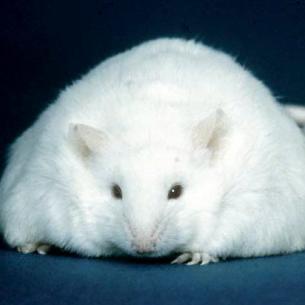Heparin is a mucopolysaccharide, which is a long chain sugar molecule, is found in mucous and fluid surrounding the joints. Heparin was first discovered in 1918 and has been used as an anticoagulant for the treatment of venous thromboembolism or VTE (blood clots in the veins of lower extremities and the lung) since the 1930s. It is estimated that the annual incidence of VTE is about one in 1000 adults, making anticoagulants one of the most important classes of prescribed drugs.
Research has revealed that heparin has a greater physiological impact than previously thought. In fact, its primary role in vivo, is not as an anticoagulant, although its primary role remains unclear. A recent paper published in Cell Reports reveals data that show heparin is involved in the body's energy homeostasis, meaning that heparin has an active role in the metabolism of lipoproteins - molecules that transport fat throughout the blood. The authors of the paper highlight heparin's influence on food intake and subsequent weight gain in animal models.
This study, a collaboration between Baylor College of Medicine and South China Agricultural University, is compelling in that a cheap and fairly safe drug used for the treatment of blood clots is actually much much more than that. "In addition to its role as an anticoagulant, heparin, which is normally produced by the body, has been known to affect other biological functions. In this study, we are among the first groups to investigate heparin's potential role in regulating the body's energy balance," said co-author Dr. Yong Xu, Associate Professor of Pediatrics, and of Molecular and Cellular Biology at Baylor College of Medicine.
The study's other co-author, Dr. Gang Shu, Professor in the College of Animal Science at South China Agricultural University added, "Our earlier studies showed that serum heparin levels in mice increased significantly during starvation. These encouraged us to explore a potential role of heparin in feeding control."
The researchers found that endogenous heparin levels are inversely related to nutritional states. In calorie-deprived mice, heparin levels were high. Similarly, after mice were injected with heparin it stimulated food-intake in mice in a dose-dependent manner. This effect was observed whether the injection occurred peripherally (intraperitoneal) or centrally (intracerebroventricular). Conversely, when mice were treated with an heparinase, the enzyme that breaks down heparin, food intake was reduced.
Long-term, there was notable weight gain in both male and female mice treated with heparin (more so in male mice) and there was also increased feed efficiency (ratio between body weight and cumulative food intake) and decreased energy expenditure, measured by heat production and energy expenditure. The mice not only became fat but metabolically lazy as well.
How exactly does this happen? It turns out that heparin directly stimulates a protein chemical in the brain, called agouti-related peptide (AgRP). AgRP is synthesized in the hypothalamus and together with another protein, neuropeptide Y (NPY) work to increase appetite, decrease metabolism and energy expenditure.
Interestingly, "we also demonstrated that heparin activates AgRP neurons by competing with insulin for binding to the insulin receptor," said Shu.
"Insulin and heparin have opposite effects on AgRP neurons," Xu said. "Insulin treatment suppresses AgRP neuron firing of electrical impulses and expression of AgRP neuropeptides. We found that heparin competes with and prevents insulin from binding to insulin receptors on AgRP neurons."
Clinically, this finding could have significant impacts on the future use of heparin. Given that obesity is an independent risk factor for developing VTEs, perhaps caution must be exercised in prescribing it for obese patients and other classes of anticoagulants ought to be considered. Additionally, as the authors note, heparin may serve as a target molecule in developing weight loss drugs.




